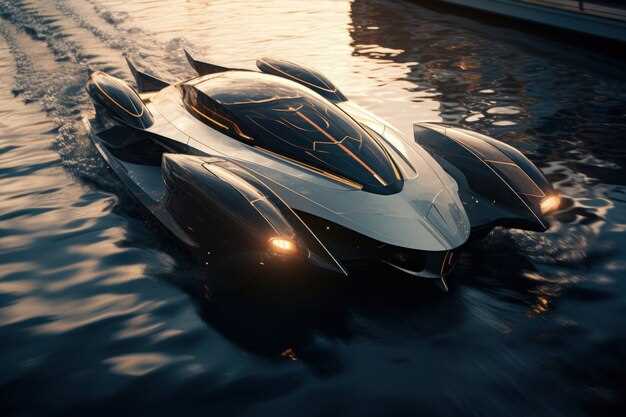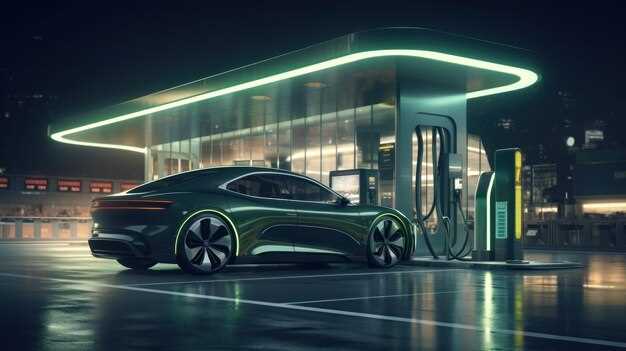Explore the fascinating evolution of luxury car brands that have shaped the automotive industry. From the opulence of early 20th-century icons to today’s high-performance marvels, these brands represent more than just transportation–they embody craftsmanship and innovation.
Consider Mercedes-Benz, a pioneer that introduced advanced engineering and safety features, fundamentally altering the expectations of luxury vehicles. The sleek lines and powerful engines of this brand continue to set benchmarks for elegance and performance.
Look at Rolls-Royce, synonymous with luxury since its inception. Each model is a masterpiece, reflecting the artisanal quality that goes into every detail. Their commitment to bespoke craftsmanship ensures that each car is a unique statement of sophistication.
Don’t overlook the rise of Tesla, which redefines luxury through sustainability. Combining cutting-edge technology with eco-friendly practices has placed this brand at the forefront of contemporary luxury, appealing to a new generation of discerning consumers.
As we reflect on these prestigious brands, we see how they have not only withstood the test of time but also influenced the direction of the automotive world. Their legacies offer valuable insights into the future of luxury motoring, blending tradition with innovation.
Evolution of Luxury Cars from the Early 20th Century
The early 20th century marked a significant turning point for luxury automobiles. Brands like Rolls-Royce and Bentley emerged, setting high standards in craftsmanship and performance. Rolls-Royce introduced the Silver Ghost in 1906, renowned for its smooth ride and engineering excellence, establishing a reputation that endures today.
Bentley’s 3 Litre model, launched in 1921, showcased the brand’s racing pedigree and luxurious features. This balance of performance and luxury appealed to affluent buyers. By the 1930s, the styling revolution took off, with designers like Figoni et Falaschi creating streamlined bodies that exuded elegance and sophistication.
The 1940s and 1950s saw an increase in technological advancements. Cadillac introduced the first mass-produced V8 engine, combining power with luxury. This period also saw the rise of American luxury brands, with models like the Lincoln Continental setting new standards for comfort and design in the United States.
By the 1960s, luxury cars started to feature more personalized touches. Customers demanded customization, leading brands like Mercedes-Benz and Jaguar to offer bespoke options. The Mercedes 600 of 1963 became a symbol of prestige, favored by heads of state and celebrities alike.
The late 20th century brought about a shift in consumer expectations. With the introduction of the SUV segment, brands like Range Rover and Mercedes-Benz entered the market, blending luxury with practicality. This shift responded to changing lifestyles while maintaining high standards for comfort and quality.
Today’s luxury cars reflect a blend of heritage and modern technology. Electric vehicles like the Tesla Model S and luxury sedans such as the BMW 7 Series showcase innovation, yet they also honor traditional craftsmanship. The evolution of luxury cars continues, driven by consumer desires for sustainability, performance, and style.
Iconic Luxury Brands and Their Founding Stories
Rolls-Royce, founded in 1904 by Charles Rolls and Henry Royce, emerged from a partnership based on shared values of excellence and innovation. Royce, an engineer, brought technical mastery, while Rolls contributed to marketing the brand as synonymous with luxury. Their first car, the Rolls-Royce 10 hp, established a legacy of quality that endures today.
Bentley, another cornerstone of luxury, began in 1919 when Walter Owen Bentley sought to create cars that blended performance with elegance. The brand gained fame with its success at the 1929 Le Mans race. Bentley’s commitment to craftsmanship and attention to detail set a standard for luxury vehicles, appealing to enthusiasts and collectors alike.
Ferrari, founded in 1939 by Enzo Ferrari, started as a racing team before evolving into a symbol of speed and sophistication. The iconic prancing horse logo arose from Enzo’s relationship with Italian pilot Francesco Baracca. The brand flourished in the motorsport arena, transforming into a luxury car manufacturer that emphasizes performance, design, and exclusivity.
Aston Martin was established in 1913 by Lionel Martin and Robert Bamford. The brand quickly gained recognition for its bespoke vehicles and was closely linked to motorsport. The 1920s showcased iconic models, solidifying its place in luxury car history and culture. The association with James Bond further enhanced its allure, making Aston Martin a representation of British elegance.
Mercedes-Benz traces its roots to Karl Benz and Gottlieb Daimler in the late 19th century. The first practical automobile, the Benz Patent-Motorwagen, marked a turning point in automotive history. The company became synonymous with engineering excellence, introducing innovations like the crumple zone and anti-lock braking system, reinforcing its status as a leader in luxury and safety.
Each of these brands tells a unique story of ambition, craftsmanship, and commitment to superior quality. Their legacies influence the luxury automotive market and resonate with enthusiasts worldwide, making them icons in their own right.
The Role of Design in Shaping Luxury Car Identity
Design elements define luxury car brands, creating a visual language that resonates with customers. Every curve, line, and feature work together to convey exclusivity and sophistication. For instance, brands like Ferrari and Aston Martin use aerodynamics and elegant proportions to embody speed and performance, while Rolls-Royce emphasizes classic luxury with its iconic grille and serene silhouettes.
Color palettes play a pivotal role as well. Ferrari’s signature red evokes passion and excitement, while Bentley offers a range of customized hues that symbolize individuality and refinement. These choices allow clients to form a personal connection with the vehicle.
Materials used in construction also influence perceptions of luxury. High-quality leather, polished woods, and advanced metals signal craftsmanship and attention to detail, further elevating the identity of each brand. For example, Lamborghini utilizes a minimalist yet bold interior design that mirrors its exterior sports car appeal, capturing the essence of high performance.
Design consistency across models strengthens brand identity. In the case of Porsche, the unmistakable silhouette of the 911 has persisted for decades, reinforcing a legacy of sporty elegance. By maintaining visual continuity, brands can cultivate customer loyalty, as owners often return for new models that reflect familiar design cues.
Innovation drives luxury car design forward. Hybrid and electric vehicles challenge traditional aesthetics, pushing brands to create futuristic looks while integrating sustainable technologies. Tesla’s minimalist interior design, for example, highlights its cutting-edge technology, attracting a new generation of luxury car enthusiasts.
Ultimately, design shapes the narrative of a luxury car brand. It communicates values, aspirations, and lifestyles, forging emotional ties with consumers and ensuring that each model stands out in a crowded market. As luxury cars evolve, design will remain at the heart of their identities, continually captivating fans and fostering brand loyalty.
Technological Innovations: Driving Forces Behind Luxury Brands
Luxury car brands invest significantly in technology to offer unique features and set themselves apart in the market. Focusing on innovation empowers these manufacturers to enhance performance, safety, and convenience. Here are key technological advancements that are shaping the luxury automotive sector:
- Advanced Driver Assistance Systems (ADAS): Features like adaptive cruise control, lane keeping assist, and automatic emergency braking enhance safety and driving comfort.
- Electrification: Brands like Tesla and Porsche offer electric models that combine performance with sustainability. Transitioning to electric powertrains helps meet changing consumer expectations and environmental regulations.
- Autonomous Driving: Luxury brands invest in self-driving technology, with companies like Mercedes-Benz and Audi testing vehicles equipped with Level 3 automation capabilities. This allows for more relaxed driving during certain conditions.
- Connectivity and Infotainment: Integrating comprehensive infotainment systems and seamless smartphone connectivity enhances the driving experience. Brands utilize touchscreens, voice commands, and AI assistants to connect with drivers.
- Lightweight Materials: Implementing carbon fiber, aluminum, and high-strength steel reduces vehicle weight, improving efficiency and performance. This approach supports both speed and fuel economy.
- Performance Enhancements: Technologies such as all-wheel-drive systems and adaptive suspension provide better handling and ride quality. Brands like Lamborghini and Ferrari continually push the boundaries of speed and agility through engineering.
Staying ahead in technology is not just an option; it’s a necessity for luxury brands to attract discerning customers. Investing in these innovations allows manufacturers to address both modern consumer desires and environmental concerns, ensuring a prominent place in the automotive future.
Market Trends: How Consumer Preferences Influence Luxury Car Brands
Luxury car brands must prioritize sustainability as consumers increasingly demand environmentally friendly options. Electric vehicles (EVs) are gaining traction, with brands like Tesla leading the way. Incorporating hybrid technology or fully electric models can enhance a brand’s appeal and align it with consumer values. For instance, recent surveys show that over 60% of luxury car buyers consider the environmental impact of their vehicle purchase.
Customization options significantly influence consumer choices. Buyers often seek unique features that reflect their personal identity. Offering bespoke services, such as personalized interiors or tailored performance packages, can set a luxury brand apart. Brands like Rolls-Royce and Bentley have thrived by providing extensive customization, directly appealing to this preference.
Tech integration remains a key driver for luxury car sales. Consumers want advanced connectivity, with features like autonomous driving capabilities, smart infotainment systems, and seamless smartphone integration. Brands that invest in cutting-edge technology not only enhance user experience but also attract tech-savvy customers. For instance, Mercedes-Benz and BMW have received praise for their innovative tech offerings.
Safety features significantly affect purchasing decisions, especially in the luxury segment. Consumers increasingly prioritize models with top safety ratings and advanced driver-assistance systems. Brands that consistently score high in safety tests reinforce trust and desirability. Volvo’s reputation for safety has solidified its position in the luxury market, attracting discerning buyers seeking peace of mind.
Lastly, brand heritage plays a crucial role. Consumers connect emotionally with brands that have a rich history and storytelling. Prominent brands like Ferrari and Aston Martin capitalize on their legacy, appealing to buyers who value tradition alongside modern luxury. Highlighting this heritage through marketing can enhance brand loyalty and attract new customers.
Legacy of Luxury Cars: Collectibility and Cultural Impact
Luxury cars hold significant value in both the automotive market and popular culture. Collectors prioritize brands like Ferrari, Bugatti, and Rolls-Royce due to their craftsmanship, performance, and historical significance. These vehicles become more than mere transportation; they symbolize status, innovation, and a lifestyle.
Factors that contribute to collectibility include production numbers, unique features, and provenance. Limited editions or models with interesting backstories often fetch high prices at auctions. For example, the Ferrari 250 GTO is one of the most sought-after classic cars, with prices soaring into the tens of millions. Such exclusivity adds to the allure for collectors.
Cultural impact is equally profound. Luxury cars frequently appear in films, music videos, and art, forging connections with elite lifestyles and aspirations. Brands invest in collaborations and sponsorships that reinforce their image, such as Lamborghini’s presence in high-profile events like the Geneva Motor Show. These appearances not only boost brand awareness but also create a narrative around the vehicles that resonates with enthusiasts.
The automotive world hosts numerous events where collectors gather, share stories, and celebrate their passion. Concours d’Elegance showcases pristine vehicles, while vintage car auctions attract bidders worldwide. These gatherings foster community and heighten interest in luxury car culture.
Investment potential is a significant motivator for many collectors. Classic cars appreciate over time, sometimes outperforming traditional assets like stocks. Buyers often see luxury cars not just as a hobby but as part of a diversified investment portfolio. Understanding market trends can guide collectors towards valuable acquisitions.
Luxury cars also impact automotive design and technology. Brands set benchmarks for performance and style, influencing mass-produced vehicles. Innovations first seen in high-end models often trickle down to mainstream cars, showcasing how luxury influences broader automotive trends.
In summary, the legacy of luxury cars is marked by their collectibility and cultural significance. With investment opportunities, community events, and their pervasive presence in popular media, luxury cars remain a vital part of both automotive history and the contemporary landscape.






